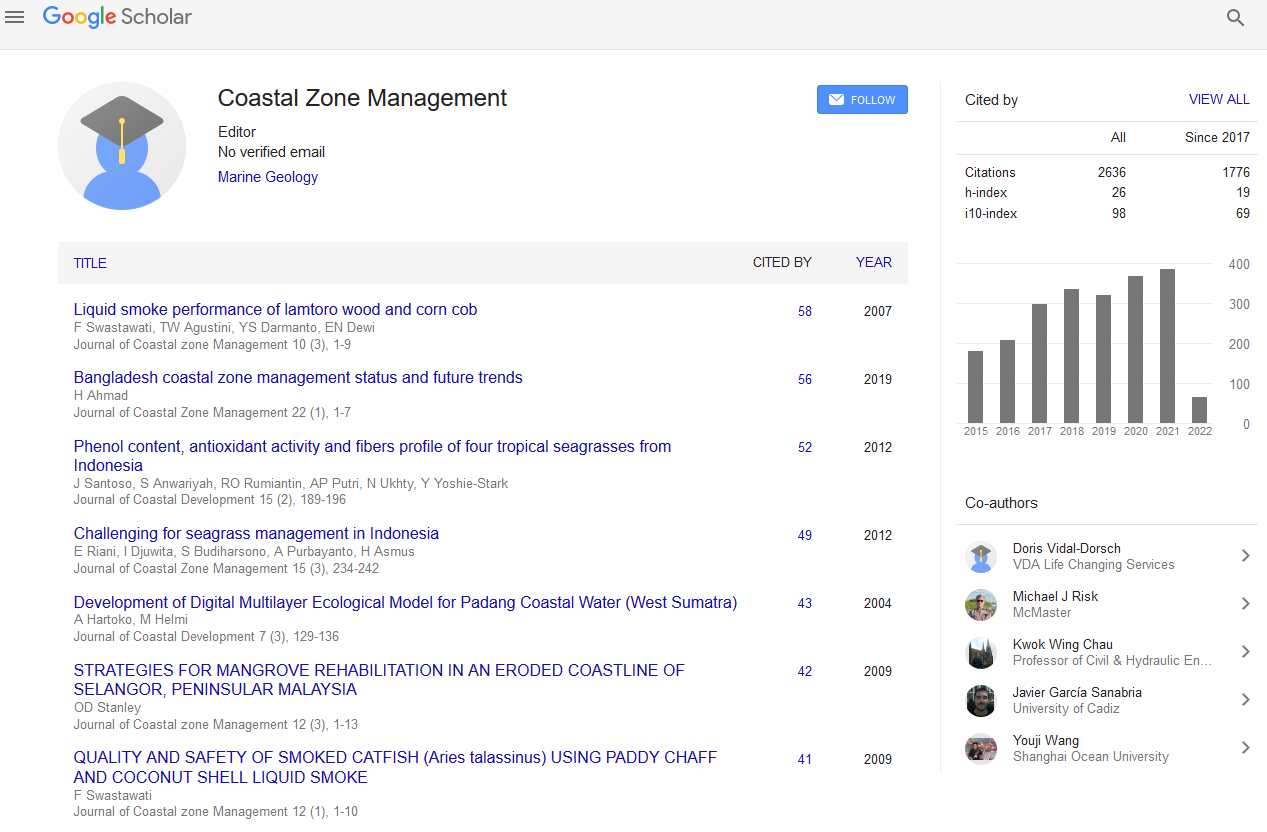Indexed In
- SafetyLit
- RefSeek
- Hamdard University
- EBSCO A-Z
- OCLC- WorldCat
- Publons
Useful Links
Share This Page
Journal Flyer

Open Access Journals
- Agri and Aquaculture
- Biochemistry
- Bioinformatics & Systems Biology
- Business & Management
- Chemistry
- Clinical Sciences
- Engineering
- Food & Nutrition
- General Science
- Genetics & Molecular Biology
- Immunology & Microbiology
- Medical Sciences
- Neuroscience & Psychology
- Nursing & Health Care
- Pharmaceutical Sciences
Abstract
Ocean Observation on SST Variability and Subsurface Sea Water Temperature of the North Papua the Fate of El_Nino 1997 & 2007 and La Nina 2002: Field Measurement and Triton Buoy Data
A.Hartoko
water temperature (both horizontal and vertical) profile to analyze some oceanographic phenomena
such as up-welling process and its relationship to its seasonal variability and spatial distribution was
inevitable. Especially to avoid the misleading interpretation of using only sea surface temperature data
for deep water fish biomass distribution analysis, etc. Field SST data of July – August 1997 was
measured by CTD (Conductivity-Temperature-Depth) sensors on board of RV. BARUNA JAYA IV with
accuracy of 0.01 °C. Field SST data of 2002 and 2007 was derived from TRITON Buoy data base with
permission of Jamstec-Japan. All field and TRITON buoy SST data were processed into a spatial SST
layer using Kriging method with Er_Mapper (Licensed user) software, and overlaid on the bathymetric
layer. Average daily SST east monsoon 1997 (El Nino event) was 28.46°C, where as presumably La
Nina event 2002 : the average daily SST was 29.75°C and for 2007 was : 29.83°C indicates a higher
SST than both 1997 and 2002. Average daily SST of west monsoon 2007 was 29.69°C. Daily SST of
2007 east monsoon was about 0.08 - 0.5°C higher than the same season of 2002 (TRITON Buoy data).
The paper analyze and revealed the fate / occurrence of up welling zone in adjacent of Halmahera
islands as well as the Hot Event (HE) phenomena through the analysis based on multi-layer and subsurface
horizontal of both horizontal and vertical temperature of the field measurement 1997 and 2002
and 2007 TRITON data. Spatial multi-depth-layer approach had been developed in the paper is
important for the analysis of deep water large pelagic fishery such as tuna fishery and its spatial
distribution pattern.

